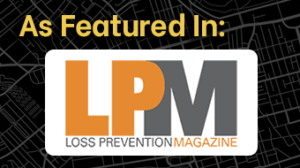 Using data to asses crime risk is crucial because media reports and political statements throughout 2021 and 2022 incorrectly suggest that crime is at an all-time high. In reality, US crime rates have decreased significantly over the last three decades. That is not to say that crime isn’t a problem today — it certainly is. Aggregate violent crime rates have fluctuated upward and downward over the past decade, and it is unclear where they are heading in the future. Furthermore, certain retail sectors have shown significant crime spikes not in keeping with the aggregate national patterns. With this in mind, it is critical for retail security professionals to have the right tools to assess crime risk objectively and to cut through media sensationalism.
Using data to asses crime risk is crucial because media reports and political statements throughout 2021 and 2022 incorrectly suggest that crime is at an all-time high. In reality, US crime rates have decreased significantly over the last three decades. That is not to say that crime isn’t a problem today — it certainly is. Aggregate violent crime rates have fluctuated upward and downward over the past decade, and it is unclear where they are heading in the future. Furthermore, certain retail sectors have shown significant crime spikes not in keeping with the aggregate national patterns. With this in mind, it is critical for retail security professionals to have the right tools to assess crime risk objectively and to cut through media sensationalism.
What are the tools an organization should use to assess its crime risks effectively – is using data to assess crime risk the right path?
Ideally, an organization should use a multi-prong, data-driven approach to assessing its crime risks involving what I like to call the “three legs of the stool”:
- Site-specific crime risk data to objectively quantify the crime potential at a given location (e.g., CAP Scores).
- Incident history data to track what occurred at the location in the past.
- Survey information (e.g. distances to highway exits, police stations, or attractive nuisances) to identify augmenting and mitigating factors that might draw crime towards a specific location or push it away.
Many organizations use crime data from police reports and/or the FBI’s Uniform Crime Reporting (UCR) program. Is this enough?
UCR data provide aggregations for cities, counties, and larger geographies. UCR information has its place when looking at broad geographic and temporal crime trends, but the FBI itself strongly discourages ranking and comparing cities and regions using UCR data alone. No, using police reports and UCR data alone falls short of the mark. Police reports can help explain the historic crime environment at a specific location. However, UCR data have a number of shortcomings:
- their use is retrospective rather than forward-looking,
- the data are often inconsistent from one jurisdiction to the next,
- they can be subject to political influences and financial constraints
- they are not industry-specific, and, police-gathered crime data are difficult or impossible to obtain in many jurisdictions.
UCR data provide aggregations for cities, counties, and larger geographies. UCR information has its place when looking at broad geographic and temporal crime trends, but the FBI itself strongly discourages ranking and comparing cities and regions using UCR data alone. Furthermore, FBI data are not at all appropriate for conducting site-specific assessments. It is an ecological fallacy to assume that relationships observed at the city level also operate down at the neighborhood level.
Like with UCR data, the media tend to examine crime using broad geographic areas — cities and states — without recognizing the significant differences that can exist from neighborhood to neighborhood. There have been a lot of recent news reports characterizing certain cities as “dangerous” based on aggregate violence and shootings data. However, these news reports often dumb down complex situations and fail to point out that these crime spikes are often concentrated in specific neighborhoods and are not citywide.
In August 2021, news outlets reported that nearly 40% of law enforcement agencies nationwide, including the New York City Police Department and the Los Angeles Police Department, failed to report their 2021 crime data to the FBI. What impact will this have?
This gap in data will be a problem for those who are dependent upon UCR data for their intended purpose. However, it won’t impact companies like us that build crime risk models using site-specific crime data gathered directly from police departments. So, while it is true the NYC and Los Angeles crime data won’t be in the FBI-collated data, we have collected all of their crime data for 2021. More importantly, we carefully review and clean all of the police data we gather to make sure that it is appropriate for our crime risk modeling.
How can security professionals cut through media hype to make more objective assessments of crime risks at their locations?
A one-size-fits-all security approach leads to security underspending at some locations and overspending at others which is why using data to assess crime risk is important. An address-specific examination of crime illustrates the tremendous variability from neighborhood to neighborhood. Armed with site-specific crime risk data, retail security professionals can better allocate their resources and focus security measures on where they are needed most to mitigate actual crime risks rather than misperceived ones.
Using a granular approach can determine whether media-reported shooting and violence increases are in fact citywide or whether they are concentrated in specific neighborhoods.
How does CAP Index keep improving its assessments from year to year?
Every year, we focus on increasing the precision and utility of our crime risk data by:
- Collecting data from additional sources as they become available, such as more suburban and rural police jurisdictions.
- Including more predictors. For example, a growing set of business variables helps us model how the proximity of certain types of businesses or other locations can affect crime risks.
- Adding new crime types to the mix. We recently developed CAP Scores for simple assault and vandalism.
- Actively exploring ways to leverage new techniques such as artificial intelligence and machine learning.
- Providing new scoring methodologies to account for the fact that perpetrators often travel varying distances to commit crimes (the “journey to crime”) depending on the target. The scoring methodologies also consider the nature and attractiveness of different types of targets for different types of crimes. For example, planning for executive protection at a residence or sending out a worker into the field has different risk factors versus protecting a distribution center.
This interview with CAP Index CEO, Steven K. Aurand was featured in an abridged format as part of Loss Prevention Magazine’s Summer Edition 2022 “Ask the Expert” series. The print version can be found at this link on page #60.
Contact CAP Index now to discuss how CRIMECAST Data can help your business.
Get in Touch Now
Our experts can answer your questions.
Latest Posts

CAP Reports are critical to my risk assessments. They have enabled us to take a more surgical approach to investing in our stores that need it the most.
Brad Reeves
Senior Manager of Asset Protection
Five Below, Inc.

CAP Index is the first tool I turn to when time is of the essence. I can always depend on CAP Index to provide me qualified crime information within a very few minutes that I feel comfortable reviewing with the C-Suite.
Stephen A. Brown, CPP
Director, Corporate Security / Facility Security Officer
Burns & McDonnell

CAP Index data is a vital part of our security decision-making process.
Keith McGlen, CPP, CHPA
Associate Vice President
System Security Services
Memorial Hermann Health System

CRIMECAST® Reports have helped our organization for many years to proactively assess the particular risk for crime surrounding our facilities. The CAP Index® CRIMECSAST Platform is an easy-to-use online service that provides us with the flexibility to share and decentralize crime risk data within our North America business units.
Carlos J. Cortez,
Manager, Global Security Programs,
Kraft Foods, Inc. / Mondelez International

Our property selectors are not discouraged from a site just because it receives a high score. What we do is issue every store – all of them – a security classification. The classification determines how we allocate our security resources to that store.
Claude Verville,
Lowe’s

CAP Index's online platform, CRIMECAST, is great. It is easy to use and quick!
Ken Wieczorek,
Bank of America

In industries where there is high public contact and a customer is coming to our location (such as retail), why would you leave it to chance when planning security when there is an easy, affordable tool? When investing a million dollars on a location, what is this small charge compared to what it may cost you when you get sued?
Jay Beighley,
Nationwide Insurance

CAP Index assessments are a must for anyone engaged in asset protection. The new website is much improved and as important, easy to navigate.
Bruce List,
The Williams Companies

We have been using CAP Index for a few years and include it in our security vulnerability assessments. Highly recommend it.
Dan Yaross
Director, Protective Services
Nationwide Children's Hospital
 Sample CRIMECAST Reports
Sample CRIMECAST Reports